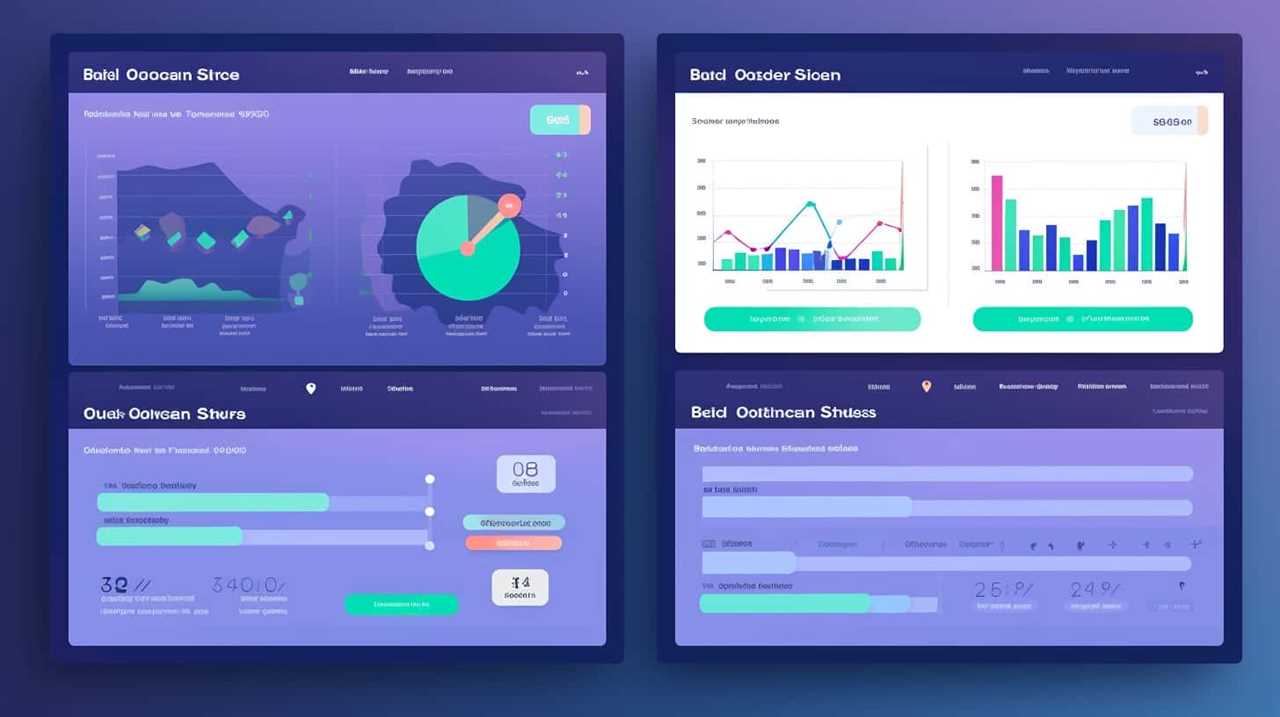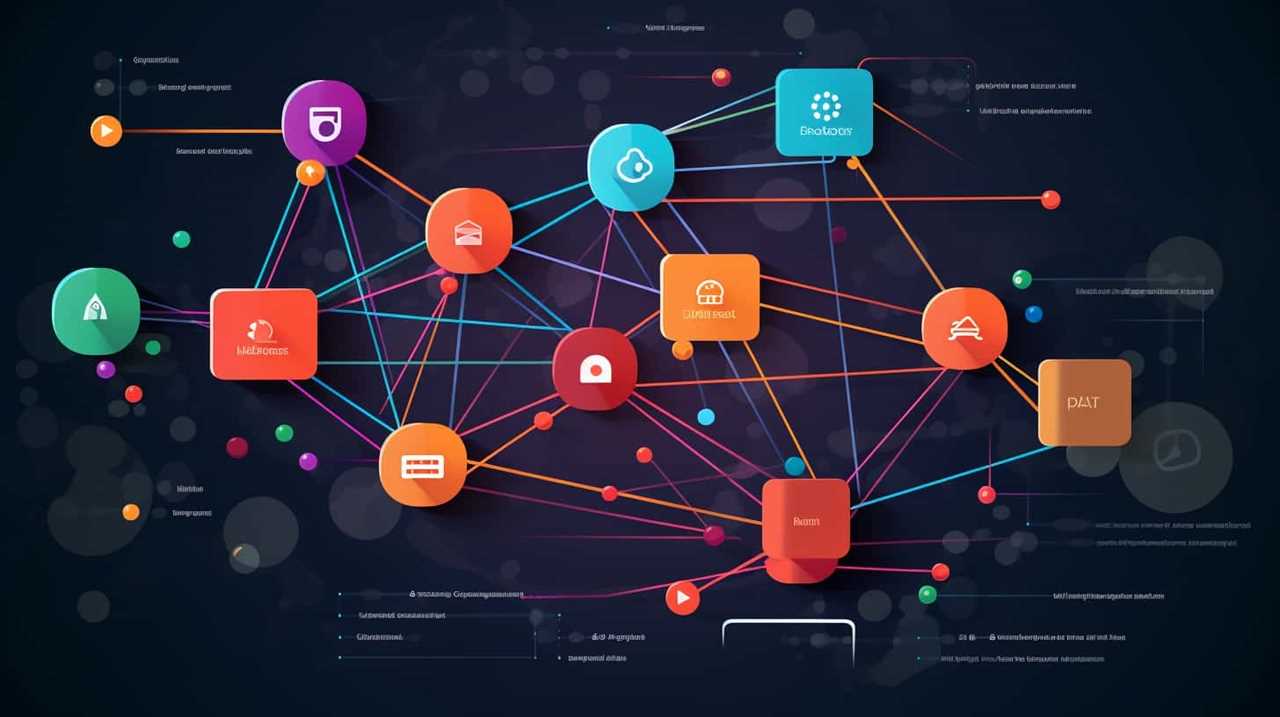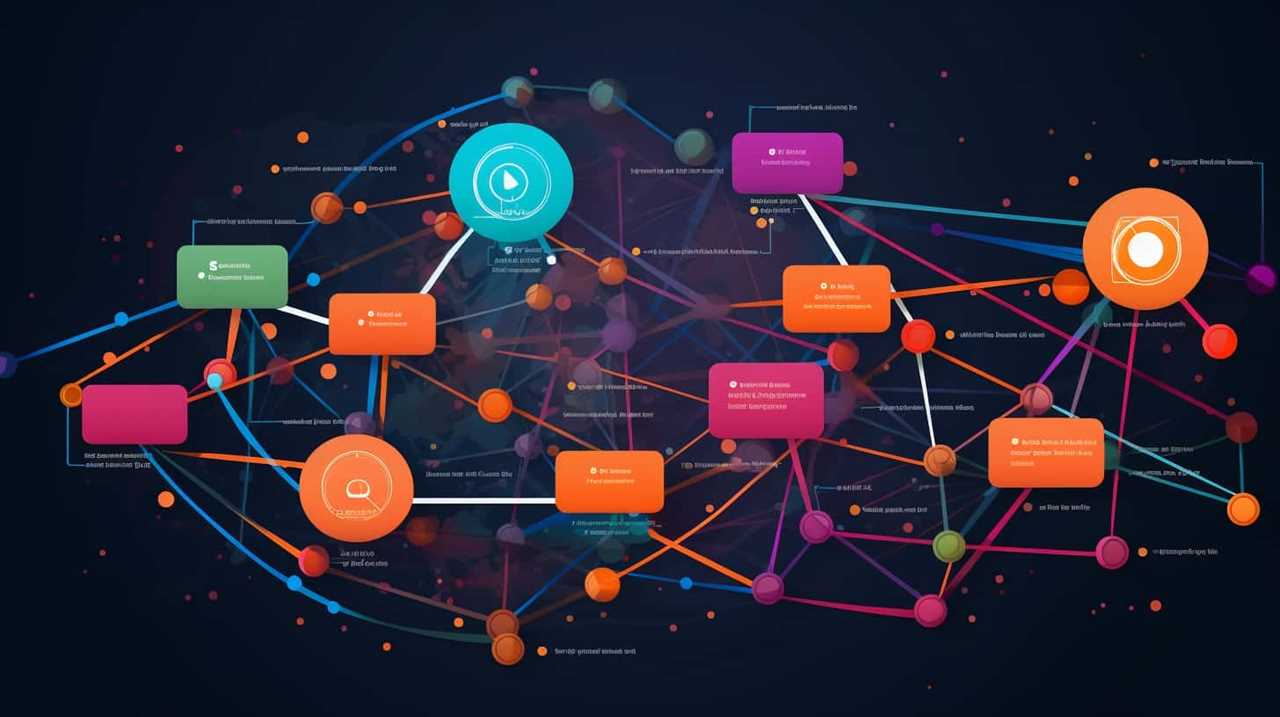Technical SEO
Seo Soft Skills

Are you questioning the significance of soft skills within the realm of SEO?
Let us affirm that they truly are vital.
In our experience, effective communication, building strong client relationships, and working collaboratively as a team are the key ingredients for success in SEO projects.
Furthermore, the ability to adapt to changes and stay resilient is paramount.
So, if you’re aiming for mastery in SEO, don’t overlook the power of soft skills.

Key Takeaways
- Soft skills such as effective communication, adaptability, and resilience are crucial for success in SEO projects.
- Building strong client relationships through active engagement, regular communication, and addressing concerns enhances client satisfaction and collaboration.
- Collaboration and teamwork in SEO projects ensure seamless coordination, problem-solving, and optimized outcomes.
- Adapting to changes in the ever-evolving field of SEO is essential for achieving optimal results, and resilience plays a key role in overcoming challenges and finding innovative solutions.
The Importance of Soft Skills in SEO
In our experience, cultivating strong soft skills is crucial for success in SEO. While technical knowledge and expertise are undoubtedly important in the field, it’s the role of emotional intelligence that truly sets apart exceptional SEO professionals.
Developing empathy enables us to understand the needs and motivations of our target audience, allowing us to create content that resonates deeply with them. By understanding their emotions and perspectives, we can tailor our SEO strategies to connect on a deeper level, resulting in higher engagement and conversion rates.
Additionally, emotional intelligence helps us navigate the ever-changing landscape of SEO with resilience and adaptability. It allows us to build strong relationships with clients, colleagues, and stakeholders, fostering collaboration and trust.
Ultimately, developing empathy as SEO professionals elevates our work and drives tangible, impactful results.

Effective Communication for SEO Professionals
To effectively execute our SEO strategies, we rely on clear and concise communication with clients, colleagues, and stakeholders. Effective communication is crucial for SEO professionals to ensure that all parties involved are on the same page and working towards the same goals.
Here are three key aspects of effective communication for SEO professionals:
- Active listening: By actively listening to our clients and colleagues, we can better understand their needs, concerns, and objectives. This allows us to tailor our strategies and recommendations accordingly, leading to more successful outcomes.
- Persuasive writing: As SEO professionals, we often need to communicate our ideas, strategies, and recommendations through written content. By using persuasive writing techniques, we can effectively convey our message and convince our audience of the value and benefits of our SEO strategies.
- Clear and concise communication: In the fast-paced world of SEO, time is of the essence. By communicating clearly and concisely, we can ensure that our messages are understood quickly and accurately, minimizing misunderstandings and maximizing efficiency.
Building Strong Client Relationships in SEO
We prioritize building strong client relationships in SEO by actively engaging with our clients to understand their goals and objectives. By doing so, we can effectively manage their expectations and ensure client satisfaction throughout the project.
To achieve this, we employ various strategies and techniques. One key approach is regular and open communication with our clients. We provide timely updates on the progress of their SEO campaigns, address any concerns they may have, and actively seek their feedback. This not only helps us understand their needs but also fosters trust and transparency in our working relationship.

In addition, we emphasize the importance of setting realistic goals and expectations with our clients. We use a three-column table to illustrate this point:
| Action | Benefits | Example |
|---|---|---|
| Regular client meetings | Enhances understanding and collaboration | Monthly progress review |
| Active listening | Builds rapport and trust | Addressing client concerns |
| Clear communication | Avoids misunderstandings | Detailed project timeline |
By incorporating these strategies, we ensure that our clients are satisfied with our services and that their expectations are effectively managed. This lays the foundation for successful collaboration and teamwork in SEO projects.
Moving forward, let’s explore how collaboration and teamwork play a crucial role in achieving SEO success.
Collaboration and Teamwork in SEO Projects
Effective collaboration and teamwork are essential for successful SEO projects, ensuring seamless coordination and optimized outcomes. In order to achieve cross functional integration in SEO projects, it’s crucial to establish clear communication channels and foster a culture of collaboration.

This can be done by implementing regular team meetings, encouraging open and honest discussions, and promoting knowledge sharing among team members. Additionally, problem solving strategies in SEO collaboration play a significant role in overcoming challenges and finding innovative solutions.
By fostering a collaborative environment where team members can brainstorm ideas, share insights, and work together to solve problems, SEO projects can benefit from diverse perspectives and expertise. Ultimately, collaboration and teamwork not only enhance the efficiency and effectiveness of SEO projects, but also contribute to the overall growth and success of an organization.
Transitioning to the next section, adapting to changes and staying resilient in SEO requires a proactive and flexible approach.
Adapting to Changes and Staying Resilient in SEO
In our SEO projects, we’ve found that adapting to changes and staying resilient is crucial for achieving optimal results.

As SEO professionals, we understand that the digital landscape is constantly evolving, and what worked yesterday may not work today. Adapting strategies is essential to keep up with the ever-changing algorithms and ranking factors. We must be agile and willing to learn and implement new techniques and tactics.
However, adapting to changes in SEO isn’t without its challenges. We may encounter obstacles such as sudden algorithm updates, shifting consumer behaviors, or increased competition. Overcoming these challenges requires a resilient mindset, where we can bounce back from setbacks and find innovative solutions.
Frequently Asked Questions
Can You Provide Some Examples of Effective Communication Strategies for SEO Professionals?
Effective communication techniques are essential for SEO professionals. Building rapport with clients is crucial to establish trust and understanding. By actively listening to clients’ needs and concerns, we can provide tailored solutions and deliver measurable results.
Our team utilizes clear and concise language, avoiding jargon, to ensure effective communication. We also use various channels, such as email, phone, and video calls, to maintain regular and open lines of communication.

These strategies foster collaboration and enable us to deliver exceptional SEO services.
How Can SEO Professionals Build Strong Client Relationships?
Building strong client relationships as SEO professionals requires a combination of trust-building and effective communication. By establishing trust, we create a foundation for long-lasting partnerships.
This can be achieved through transparent and consistent communication, delivering on promises, and providing valuable insights.
Additionally, active listening and understanding the client’s goals and needs are crucial. By actively engaging with clients, addressing their concerns, and offering tailored solutions, we can foster strong client relationships that lead to mutual success.

What Are Some Key Aspects of Collaboration and Teamwork in SEO Projects?
Collaboration dynamics and effective teamwork strategies are crucial in SEO projects. By working together as a team, we can leverage each other’s strengths and expertise to achieve outstanding results.
Communication is key in fostering collaboration, ensuring everyone is on the same page and working towards common goals.
Additionally, dividing tasks and responsibilities based on individual skills and interests can promote efficiency and productivity.
Ultimately, strong collaboration and teamwork are essential for delivering high-quality SEO outcomes.

How Can SEO Professionals Adapt to Changes and Stay Resilient in the Ever-Changing Field of SEO?
How can we adapt our strategies and stay resilient in the ever-changing field of SEO? It’s a question that demands our attention and requires constant evaluation.
Adapting to changes means being open to new ideas, embracing emerging technologies, and staying ahead of the curve.
Resilience in SEO means being able to bounce back from setbacks, learning from failures, and continuously improving our skills.
To thrive in this dynamic industry, we must be proactive, adaptable, and resilient.

What Are Some Common Challenges Faced by SEO Professionals in Terms of Soft Skills?
When it comes to the challenges faced by SEO professionals in terms of soft skills, building emotional intelligence and overcoming imposter syndrome are two common hurdles.
Developing emotional intelligence helps us navigate client relationships and team dynamics effectively, while overcoming imposter syndrome allows us to confidently showcase our expertise.
Both skills are crucial in the ever-changing field of SEO, as they contribute to our resilience and ability to adapt.
Conclusion
In conclusion, soft skills are the secret weapon of successful SEO professionals. By combining effective communication, building strong client relationships, and embracing collaboration and teamwork, we can adapt to changes and stay resilient in the ever-evolving world of SEO.

So let’s sharpen our skills, embrace the power of connection, and create a rhythm and flow that sets us apart. Together, we can conquer the challenges and achieve outstanding results in the world of SEO.
Technical SEO
Why Is My Seo Not Improving

Feeling exasperated by your SEO endeavors? We empathize with your situation. Regardless of the relentless effort we put in, our SEO outcomes have been disappointing.
But fear not, fellow SEO enthusiasts! In this article, we’ll uncover the reasons why our SEO isn’t improving. From technical issues to inadequate keyword research, we’ll delve into the nitty-gritty of what’s holding us back.
So grab a cup of coffee and join us on this quest for SEO mastery.
Key Takeaways
- Website speed optimization is crucial for improving SEO performance.
- Thorough keyword research and optimization are essential for driving organic traffic to the website.
- A well-structured and easy-to-navigate website enhances user satisfaction and improves SEO.
- Creating high-quality, relevant, and valuable content is necessary for improved SEO rankings.
Technical Issues Affecting SEO Performance
Technical issues can significantly impact our SEO performance. One of the key technical factors that affect SEO is website speed. Search engines prioritize websites that load quickly because users value fast-loading pages. Slow loading times can lead to higher bounce rates and lower search engine rankings. Therefore, optimizing website speed is crucial for improving SEO.

Another important technical aspect is mobile optimization. With the increasing use of mobile devices, search engines now prioritize mobile-friendly websites. Websites that aren’t optimized for mobile may experience lower rankings and reduced visibility in search results.
To ensure optimal SEO performance, it’s essential to address technical issues such as website speed and mobile optimization. By focusing on these factors, we can enhance our website’s visibility and improve overall SEO results.
Now, let’s explore another crucial aspect of SEO – inadequate keyword research and optimization.
Inadequate Keyword Research and Optimization
To address the issue of inadequate keyword research and optimization, we must understand the importance of selecting the right keywords to improve our SEO performance. A solid keyword strategy is crucial for driving organic traffic to our website.

It involves conducting thorough competitor analysis to identify the keywords they’re targeting and understanding the search volume and competitiveness of those keywords. By analyzing our competitors, we can gain insights into their successful SEO tactics and identify opportunities to optimize our own website.
Inadequate keyword research can lead to targeting keywords with low search volume or high competition, resulting in poor visibility in search engine rankings. Therefore, investing time and effort into comprehensive keyword research and optimization is essential for improving our SEO performance and driving more targeted traffic to our website.
Poor Website Structure and Navigation
When it comes to improving our SEO, one common issue that can hinder our progress is having a poor website structure and navigation.
The design and layout of our website play a crucial role in providing a seamless user experience. A well-structured and easy-to-navigate website not only enhances user satisfaction but also helps search engines crawl and index our pages more efficiently.

A poorly designed website with complex navigation can confuse users and make it difficult for them to find the information they’re looking for. This can lead to high bounce rates and negatively impact our SEO efforts.
To ensure optimal website design and user experience, we should focus on organizing our content logically, using clear and descriptive URLs, and implementing user-friendly navigation menus. By addressing these issues, we can lay a strong foundation for our SEO strategy.
However, a poor website structure and navigation aren’t the only factors that can hinder our SEO progress. In the next section, we’ll discuss the importance of high-quality and relevant content.
Lack of High-Quality and Relevant Content
When it comes to SEO, the quality of your content matters. High-quality content not only attracts users, but it also helps search engines understand the relevance of your website.

In order to improve your SEO, you need to focus on creating valuable and relevant content that meets the needs of your target audience.
Content Quality Matters
We need more high-quality and relevant content to improve our SEO. Content creation is a critical aspect of any SEO strategy. Here are two reasons why content quality matters:
- Better User Engagement: High-quality content that’s informative, engaging, and well-written keeps users on our website longer. It provides value to users and encourages them to spend more time exploring our site. This increases user engagement metrics, such as time on page and bounce rate, which are important factors in SEO ranking algorithms.
- Improved Search Visibility: When our content is relevant and addresses the needs of our target audience, it’s more likely to rank higher in search engine results pages (SERPs). Search engines prioritize content that’s valuable, authoritative, and trustworthy. By creating high-quality content, we can increase our chances of ranking higher for relevant keywords and attracting organic traffic.
Relevance Attracts Users
To attract more users and improve our SEO, it’s crucial to address the lack of high-quality and relevant content.
User engagement and social media impact are key factors in attracting and retaining users. High-quality content that’s relevant to the target audience not only increases user engagement but also encourages them to stay on our website longer.

By providing valuable and informative content, we can establish ourselves as an authority in our industry and build trust with our users. This, in turn, will lead to increased user engagement, higher conversion rates, and ultimately improved SEO rankings.
To achieve this, we need to conduct thorough keyword research, optimize our content for search engines, and consistently produce high-quality and relevant content that resonates with our target audience.
SEO Needs Valuable Content
Addressing the lack of high-quality and relevant content is crucial for improving our SEO. Content optimization for SEO plays a vital role in attracting organic traffic to our website. To optimize our content, we need to focus on the following:
- Keyword research: Identifying the right keywords helps us create content that aligns with what our target audience is searching for.
- On-page optimization: Optimizing title tags, meta descriptions, headings, and URL structures ensures that search engines can understand the content and rank it appropriately.
Additionally, the importance of user engagement in SEO can’t be overstated. Engaging content that provides value to users encourages them to spend more time on our website, reducing bounce rates and increasing conversions. By creating high-quality and relevant content, we can improve our SEO performance and provide a better user experience.

As we address the issue of lack of high-quality and relevant content, it’s also important to consider the impact of insufficient backlinks and off-page optimization on our SEO.
Insufficient Backlinks and Off-Page Optimization
When it comes to SEO, one of the key factors that can hinder improvement is the lack of quality backlinks. Without a strong network of backlinks from authoritative and relevant websites, search engines may not view your site as trustworthy or credible.
Additionally, ignoring off-page optimization strategies, such as social media promotion and guest blogging, can further contribute to the insufficiency of backlinks and hinder your SEO progress.
To improve your SEO, it’s crucial to prioritize acquiring high-quality backlinks and implementing effective off-page optimization techniques.

Lack of Quality Backlinks
We have noticed a significant lack of quality backlinks in our SEO strategy, resulting in insufficient backlinks and suboptimal off-page optimization. This is a critical issue that needs to be addressed promptly in order to improve our SEO performance.
The absence of quality backlinks hinders our website’s authority and credibility in the eyes of search engines, which ultimately affects our rankings and visibility. To rectify this, we need to implement effective link building techniques such as guest posting on reputable websites, which can provide valuable backlinks and drive targeted traffic to our site.
Additionally, we should explore other off-page optimization strategies such as social bookmarking, directory submissions, and influencer outreach to further enhance our online presence and authority.
Failing to address this lack of quality backlinks will result in missed opportunities for higher rankings and increased organic traffic.

Now, let’s delve into another critical issue: ignoring off-page optimization.
Ignoring Off-Page Optimization
To improve our SEO performance, it’s crucial that we not ignore off-page optimization, especially when it comes to addressing insufficient backlinks and off-page optimization.
Off-page optimization refers to activities that take place outside of our website but still have a significant impact on our search engine rankings. One key aspect of off-page optimization is building high-quality backlinks. These backlinks serve as a signal to search engines that our website is trustworthy and authoritative. Implementing effective link building strategies can help us obtain these valuable backlinks.
Additionally, engaging in social media activities can also contribute to off-page optimization. By actively participating in social media platforms and promoting our content, we can increase our online visibility and drive more traffic to our website.

Ignoring off-page optimization can hinder our SEO efforts and prevent us from achieving higher rankings in search engine results.
Failure to Track and Analyze SEO Metrics
One common reason for a lack of improvement in our SEO is a failure to track and analyze the important metrics.
Tracking the effectiveness of our SEO efforts is crucial for understanding what’s working and what needs improvement. It allows us to identify trends, measure the impact of our strategies, and make data-driven decisions.
Analyzing data provides valuable insights into the performance of our website, keywords, and content. By examining metrics such as organic traffic, bounce rate, and conversion rate, we can determine which areas require optimization and prioritize our efforts accordingly.

Additionally, tracking and analyzing SEO metrics enable us to compare our performance against competitors and identify opportunities for growth.
Neglecting this crucial step hinders our ability to make informed decisions and achieve the desired results.
Frequently Asked Questions
How Long Does It Usually Take to See Improvements in SEO Performance?
On average, it takes time to see improvements in SEO performance due to various factors. Factors affecting SEO improvements include website optimization, content quality, backlinks, competition, and search engine algorithm updates.
Can I Improve My Website’s SEO Without Focusing on Keyword Optimization?
Improving website SEO doesn’t solely rely on keyword optimization. Alternative strategies, such as content optimization, can greatly impact SEO performance. By focusing on creating high-quality, relevant content, we can enhance our website’s visibility and attract organic traffic.

Are There Any Tools or Resources Available to Help Me Track and Analyze My SEO Metrics?
We found that using SEO metrics tracking and SEO analysis tools can help us identify areas for improvement. By analyzing data and making strategic adjustments, we can optimize our SEO efforts for better results.
Is It Necessary to Have a High Number of Backlinks for Good SEO Performance?
Having a high number of backlinks is not the sole factor for good SEO performance. Backlink quality and effective link building strategies are more important in improving SEO.
What Are Some Common Technical Issues That Can Negatively Affect SEO Performance?
Common technical issues affecting SEO include broken links, slow page load times, and improper URL structures. To fix these problems, optimize your website’s code, update outdated plugins, and conduct regular site audits.
Conclusion
In conclusion, it seems that despite our best efforts, our SEO performance continues to lag behind. It’s almost amusing how technical issues, inadequate keyword research, poor website structure, lack of high-quality content, insufficient backlinks, and failure to track metrics all conspire against our quest for online visibility.

It’s like a strategic game, where every move should be carefully calculated and executed flawlessly. Alas, it seems we still have much to learn and improve upon in the intricate world of SEO.
Technical SEO
3 Elite Local SEO Services to Optimize Your Map Presence

Seeking to enhance your digital visibility? We have you covered!
In this article, we’ll be diving into three elite local SEO services that will optimize your map presence.
With our expertise in local business listing optimization, review management and generation, and location-based keyword targeting, we’ll help you dominate the local search results.
Don’t miss out on the opportunity to master your online presence and attract more customers.

Let’s get started!
Key Takeaways
- Local business listing optimization is essential for enhancing map presence and improving search engine rankings.
- Managing and responding to customer feedback promptly can help generate positive reviews and build trust and credibility.
- Incorporating location-specific keywords in website content and meta tags can increase visibility in local search results and attract a highly targeted audience.
- Map presence and organic search results work together to drive customer engagement and increase website traffic.
Local Business Listing Optimization
To enhance your map presence, we prioritize local business listing optimization by ensuring accurate and comprehensive information.
Local business citation management plays a crucial role in this process, as it involves managing and updating your business information across various online directories and platforms.
By consistently monitoring and maintaining your citations, we can ensure that your business is accurately represented online, which boosts your visibility in local search engine marketing.

Our team of experts will work diligently to optimize your business listings by providing accurate and up-to-date information, such as your business name, address, phone number, and website. This won’t only improve your search engine rankings but also enhance customer trust and credibility.
With our local business listing optimization services, you can maximize your map presence and attract more potential customers to your business.
Now, let’s move on to the next crucial aspect of your online reputation: review management and generation.
Review Management and Generation
Now, let’s delve into the important aspect of managing and generating reviews to further enhance your online reputation and map presence.

Customer engagement is crucial for the success of any business, and online reviews play a significant role in building trust and credibility with potential customers.
Effective review management involves monitoring and responding to customer feedback promptly. This demonstrates your commitment to customer satisfaction and shows that you value their opinions.
Generating positive reviews can be achieved through various strategies, such as encouraging satisfied customers to leave reviews, providing exceptional service, and addressing any negative feedback promptly and professionally.
Online reputation management is a critical component of your overall marketing strategy, as it directly impacts your visibility and credibility in local searches.

Location-Based Keyword Targeting
Continuing from our discussion on review management and generation, let’s now explore the powerful strategy of location-based keyword targeting to further optimize your map presence.
This technique involves incorporating keywords that are specific to your target location, increasing the chances of your business appearing in local search results. By utilizing geo-targeted advertising strategies and location-based content marketing, you can attract a highly targeted audience that’s more likely to convert into customers.
Here are two key benefits of location-based keyword targeting:
- Increased visibility: By including location-specific keywords in your website content, meta tags, and business listings, you can improve your chances of appearing in local search results, thus increasing your visibility to potential customers in your area.
- Higher conversion rates: When you incorporate location-based keywords, you attract customers who are actively searching for products or services in your area. This leads to higher conversion rates as these individuals are more likely to make a purchase or visit your physical store.
Frequently Asked Questions
How Long Does It Typically Take to See Results From Local Business Listing Optimization?
It typically takes time to see results from local business listing optimization. Monitoring and tracking our local SEO efforts is important. When choosing a local SEO service provider, key factors to consider include their expertise and track record.

Are There Any Specific Strategies or Techniques for Generating Positive Online Reviews?
When it comes to generating online reviews, there are several best practices to consider. One effective strategy is to leverage customer testimonials, as they provide authentic and positive feedback that can boost your online reputation.
Can Location-Based Keyword Targeting Be Effective for Businesses in Highly Competitive Industries?
Location-based keyword targeting can be highly effective for businesses in competitive industries. The importance of local citations and leveraging local partnerships cannot be overstated. These strategies optimize visibility and increase chances of success.
Is It Possible to Optimize Multiple Locations for a Single Business on Google Maps?
Yes, it is possible to optimize multiple locations for a single business on Google Maps. We can provide elite local SEO services to optimize your map presence and ensure effective Google Maps optimization for franchises.
Are There Any Risks or Drawbacks Associated With Outsourcing Local SEO Services?
Outsourcing local SEO services can be risky. Challenges may arise from relying on external agencies for local SEO. Potential pitfalls include lack of control, communication barriers, and a disconnect between brand and audience.

Conclusion
In conclusion, optimizing your map presence is crucial for local businesses to thrive in today’s digital landscape.
By utilizing elite local SEO services, such as local business listing optimization, review management and generation, and location-based keyword targeting, you can boost your visibility and attract more customers.
Don’t miss out on the opportunity to stand out among your competitors and dominate the local market.
Invest in these services and watch your business soar to new heights.

Technical SEO
Why Is Technical Seo Needed

Ah, the marvels of technical SEO! It acts as the invisible power enhancing website functionality, increasing visibility on search engines, and substantially expanding organic traffic.
With technical SEO, we ensure that your website is easily crawled and indexed, offering a seamless user experience. Say goodbye to slow loading times and hello to mobile-friendliness.
If you desire mastery in the digital realm, technical SEO is an absolute must. Let’s dive in and uncover why it’s so crucial for your online success.
Key Takeaways
- Technical SEO optimization is necessary for improving website performance, including loading times and navigation, leading to higher user satisfaction and engagement.
- Technical SEO plays a crucial role in enhancing search engine visibility, increasing organic rankings, and attracting more website traffic.
- Optimized page speed and mobile-friendliness are important factors in driving website traffic and achieving business success.
- Technical SEO strategies, such as website indexing, XML sitemaps, and structured data implementation, are essential for making websites more accessible, user-friendly, and visually appealing.
Enhances Website Performance
Enhancing website performance is a crucial aspect of technical SEO that directly impacts user experience and search engine rankings. By improving website loading time and optimizing website architecture, we can ensure that our website is fast, efficient, and user-friendly.

Improving website loading time is essential because users have little patience for slow-loading websites. Research shows that users abandon websites that take longer than a few seconds to load. By optimizing our website’s code, compressing images, and reducing the number of HTTP requests, we can significantly improve loading times.
Optimizing website architecture is another critical factor in enhancing performance. By organizing our website’s content, ensuring logical navigation, and properly structuring URLs, we enable search engines to crawl and index our site more effectively. This, in turn, improves our website’s visibility and accessibility to users.
Improves Search Engine Visibility
Improving search engine visibility through technical SEO is crucial for any website. By optimizing various technical aspects, such as website speed, mobile-friendliness, and structured data, we can increase our chances of achieving higher organic rankings.
This, in turn, leads to increased website traffic and more visibility in search engine results pages, ultimately driving more potential customers to our website.

Higher Organic Rankings
To achieve higher organic rankings and improve search engine visibility, we focus on optimizing technical SEO. By implementing technical SEO best practices, we can enhance our website’s performance and make it more attractive to search engines. This, in turn, can lead to improved click-through rates and increased conversion rates.
Technical SEO involves optimizing various technical aspects of a website, such as its structure, code, and speed. These optimizations help search engines understand and crawl our site more efficiently, ultimately improving its visibility in search results.
When our website ranks higher in organic search results, it’s more likely to attract organic traffic. This increased website traffic can then lead to even higher click-through rates and conversion rates.
Increased Website Traffic
Technical SEO plays a crucial role in boosting website traffic and enhancing search engine visibility. By implementing the right technical strategies, you can increase the number of visitors to your site, ultimately leading to higher conversion rates and improved business success.

Here are three ways technical SEO helps increase website traffic:
- Optimized page speed: A fast-loading website not only improves user experience but also helps search engines crawl and index your pages more efficiently.
- Mobile optimization: With the majority of internet users accessing websites through mobile devices, ensuring your site is mobile-friendly is essential for attracting traffic.
- Proper URL structuring: A well-organized URL structure makes it easier for search engines to understand the content of your pages, resulting in better search engine visibility.
Additionally, technical SEO can also help improve website traffic through conversion rate optimization and social media integration. By implementing these strategies, you can maximize the potential of your website and attract more targeted traffic to your business.
Boosts Organic Traffic
Our website’s technical SEO boosts our organic traffic by optimizing key elements for search engine visibility.
By implementing conversion rate optimization techniques, we ensure that our website is user-friendly and encourages visitors to take desired actions, such as making a purchase or signing up for a newsletter. This not only increases our organic traffic but also improves the overall effectiveness of our website.

Furthermore, our technical SEO strategy focuses on enhancing the quality of our content. By conducting keyword research, optimizing meta tags, and improving page load speed, we provide a seamless user experience, resulting in higher search engine rankings and increased organic traffic.
Ultimately, our dedication to technical SEO helps us attract valuable organic traffic and achieve our business goals.
Maximizes Website Crawlability
By maximizing website crawlability, we ensure that search engines can easily access and index our content, leading to better search engine rankings and increased organic traffic. Improving the crawlability of our website enhances the efficiency of search engine indexing, allowing our content to be discovered and ranked more effectively. Here are three key benefits of maximizing website crawlability:
- It ensures that search engines can find and understand all the pages on our website, increasing the visibility of our content.
- It helps to identify and fix any crawling errors or issues that may be preventing search engines from accessing certain parts of our website.
- It allows us to prioritize and optimize the indexing of our most important pages, ensuring they receive maximum visibility in search results.
By focusing on improving crawlability, we can boost our search engine rankings and drive more organic traffic to our website.

Now, let’s move on to how optimizing website indexing further enhances our SEO efforts.
Optimizes Website Indexing
After maximizing website crawlability, the next step in optimizing technical SEO is to focus on how website indexing can be further enhanced.
Website indexing is the process of search engines like Google analyzing and organizing the content on a website to make it searchable and accessible to users.
To improve website indexing, one important step is to create and submit XML sitemaps to search engines. XML sitemaps provide a roadmap of all the pages on a website, making it easier for search engines to discover and index them.

Additionally, ensuring that important pages are linked properly and have clear and descriptive meta tags can also improve website indexing.
Enhances User Experience
To further enhance user experience, it’s important to consider the impact of technical SEO. Technical SEO not only improves accessibility but also enhances navigation on a website. By implementing technical SEO strategies, websites become more user-friendly and easier to navigate, leading to a positive user experience.
Here are three key ways in which technical SEO enhances user experience:
- Faster page load times: Optimizing website speed not only improves user experience but also reduces bounce rates and increases conversions.
- Mobile responsiveness: Technical SEO ensures that websites are mobile-friendly, allowing users to access and navigate the site seamlessly on different devices.
- Structured data implementation: By using structured data markup, websites can provide rich snippets in search results, making it easier for users to find relevant information quickly.
Increases Website Speed
Optimizing website speed is crucial in technical SEO as it directly impacts user experience. Improving website loading time not only enhances user satisfaction but also reduces bounce rate, keeping visitors engaged and more likely to explore your site further.

A slow-loading website can lead to frustration and abandonment, causing users to leave before even experiencing your content. By optimizing website speed, you can ensure that your site loads quickly and efficiently, providing a seamless browsing experience for your visitors. This can result in higher user engagement, increased page views, and ultimately, improved conversions.
Next, let’s delve into another important aspect of technical SEO: ensuring mobile-friendliness.
Ensures Mobile-Friendliness
Improving website speed not only enhances user satisfaction but also reduces bounce rate, keeping visitors engaged and more likely to explore your site further.
With mobile-friendliness, we can ensure that our website is accessible and enjoyable for users on all devices.

Mobile design and a responsive layout are crucial components of creating a mobile-friendly website. Here are three reasons why mobile-friendliness is essential:
- Improved user experience: A responsive layout ensures that your website adapts to different screen sizes, providing a seamless and user-friendly experience for mobile users.
- Increased visibility in search results: Search engines prioritize mobile-friendly websites, so having a mobile-friendly site can improve your visibility and ranking in search engine results pages.
- Higher conversion rates: Mobile users are more likely to convert into customers if they can easily navigate and interact with your website on their devices.
Frequently Asked Questions
How Does Technical SEO Contribute to Improving Search Engine Visibility?
Technical SEO contributes to improving search engine visibility by optimizing the technical aspects of a website, such as website speed and performance. It complements on-page SEO efforts and ensures that search engines can crawl, index, and understand a website effectively.
What Are Some Common Technical SEO Techniques Used to Boost Organic Traffic?
Technical SEO techniques, such as optimizing site speed, improving mobile responsiveness, and using structured data, can significantly boost organic traffic. These strategies are essential for increasing visibility and driving more targeted traffic to our website.
How Does Technical SEO Maximize Website Crawlability?
Optimizing crawlability is crucial for enhancing website structure. By implementing technical SEO techniques, we can ensure search engine bots can easily navigate and index our site, leading to improved organic traffic and visibility.

Can Technical SEO Improve Website Indexing for All Types of Websites?
Yes, technical SEO can improve website indexing for all types of websites. By implementing technical SEO strategies, we can enhance crawlability, optimize site structure, and ensure search engines can easily index and understand our content. These technical SEO benefits are crucial for website success.
What Are the Key Elements of Technical SEO That Enhance User Experience?
Optimizing speed and incorporating structured data are key elements of technical SEO that enhance user experience. These techniques, like a well-oiled machine, ensure smooth navigation and provide valuable information to users.
Conclusion
In conclusion, technical SEO is an absolute necessity for any website looking to thrive in the digital world.
It enhances performance, improves visibility, boosts organic traffic, maximizes crawlability and indexing, enhances user experience, increases speed, and ensures mobile-friendliness.

Technical SEO is like the secret sauce that takes a website from good to extraordinary, propelling it to the top of search engine rankings and attracting droves of eager visitors.
Don’t miss out on the incredible benefits that technical SEO can bring to your website’s success.
-

 Expert Content Authority2 weeks ago
Expert Content Authority2 weeks agoThe Pillar of SEO: Why Content Consistency Matters Most
-

 Learning Center2 weeks ago
Learning Center2 weeks agoUncover How To Use ChatGPT to Write Effective Ad Copy
-

 Learning Center1 week ago
Learning Center1 week agoAI in 2024: 10 Things We are NOT Looking Forward To
-

 Holistic SEO3 weeks ago
Holistic SEO3 weeks agoHolistic Local SEO Tactics for Small Businesses
-

 Learning Center2 weeks ago
Learning Center2 weeks agoOptimize Your Digital Experience with Akamai CDN
-

 Learning Center3 weeks ago
Learning Center3 weeks agoExperience How GPT-4 Turbo Beats Claude 2: A Review
-

 Learning Center3 weeks ago
Learning Center3 weeks agoMastering SEO through the Google SGE Lens: A Comprehensive Guide
-

 Holistic SEO2 weeks ago
Holistic SEO2 weeks agoMaximize Engagement with YouTube Videos End Screens














